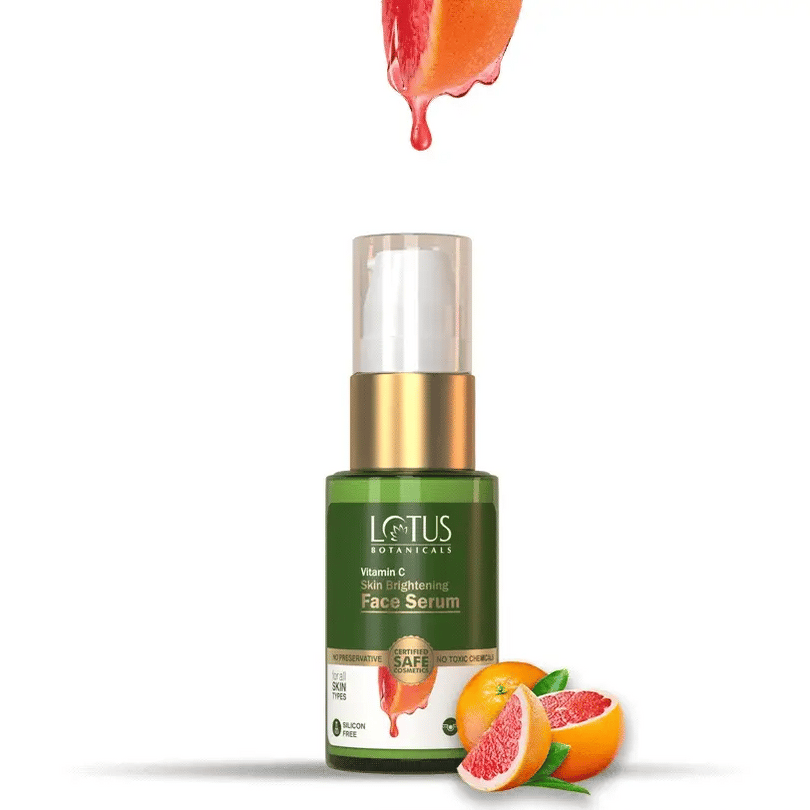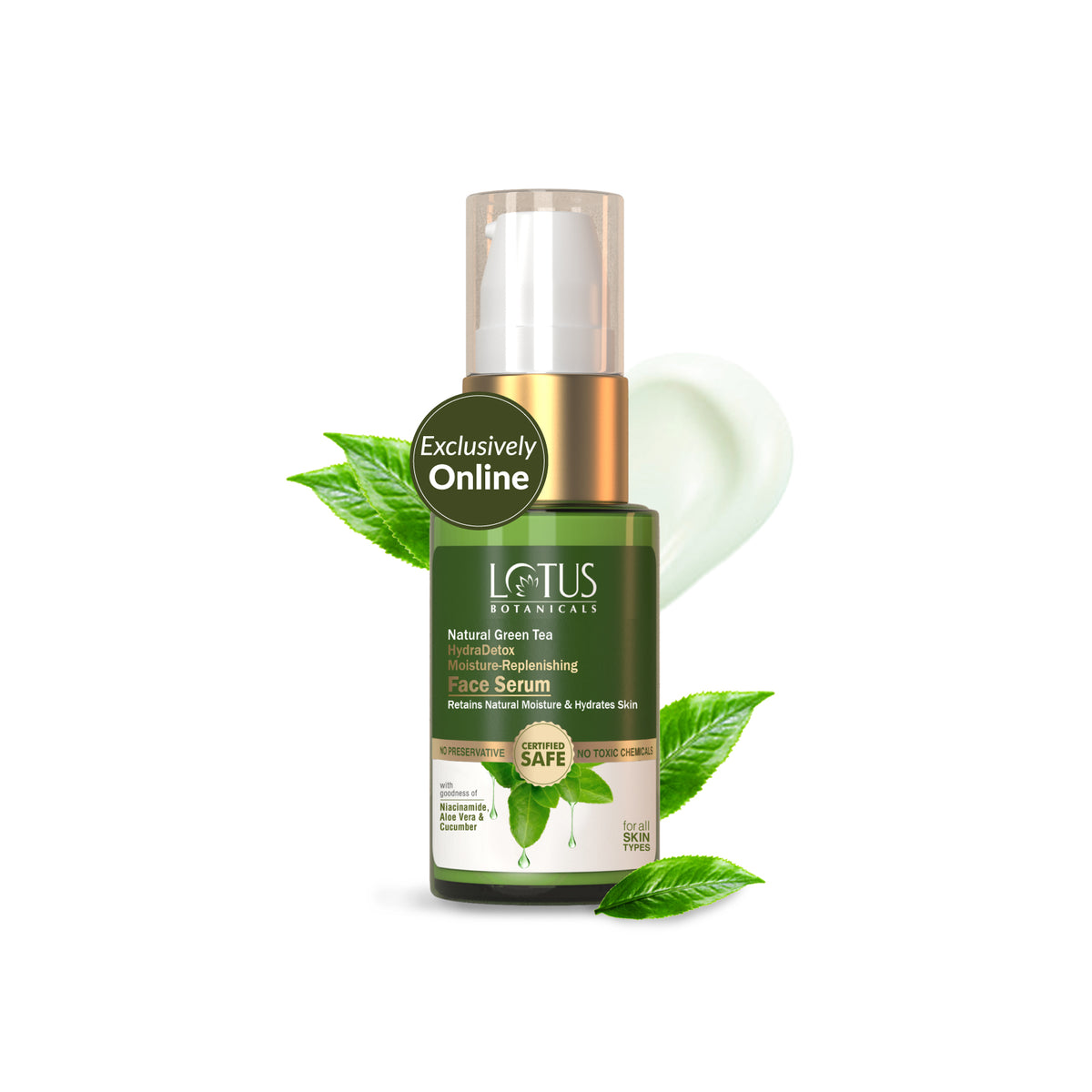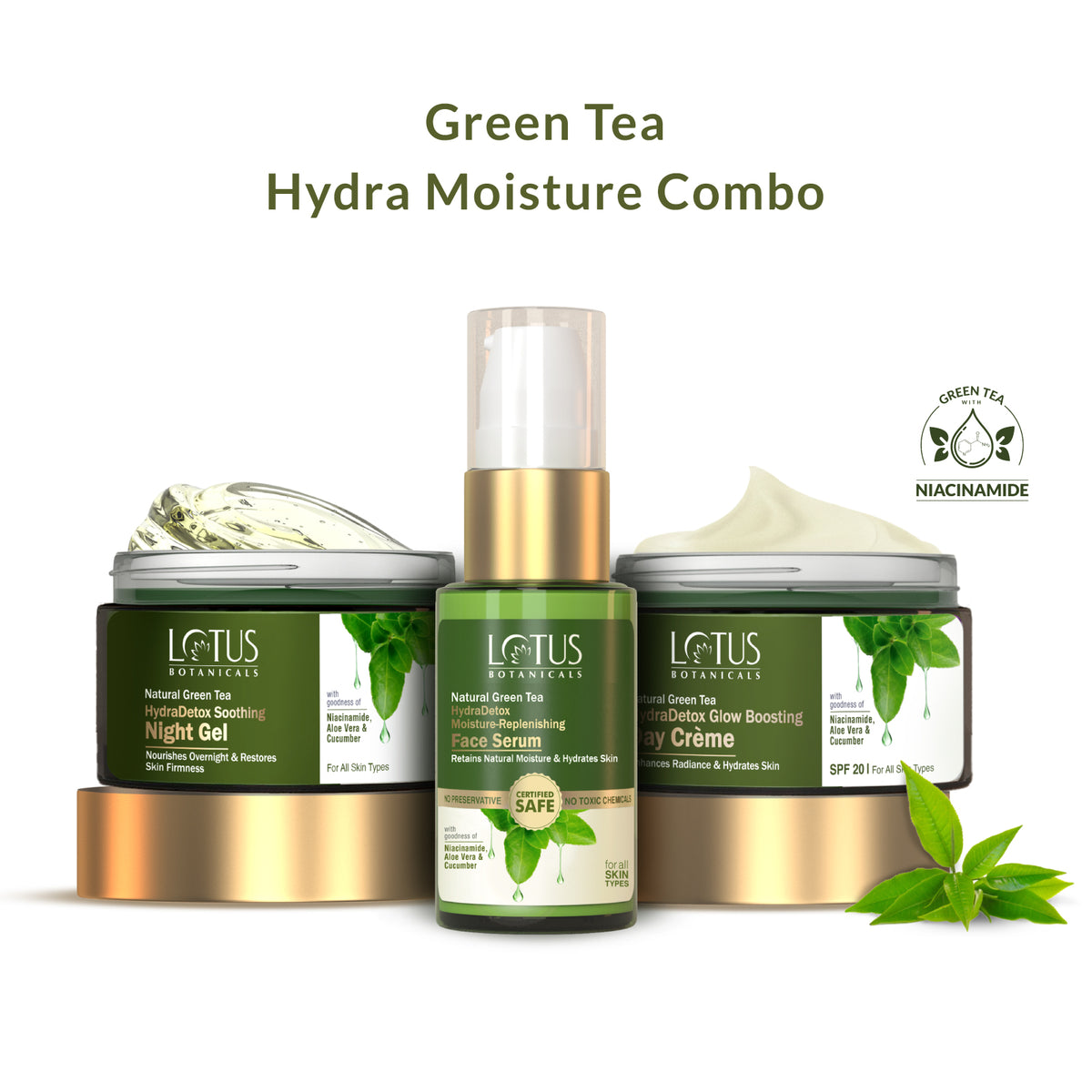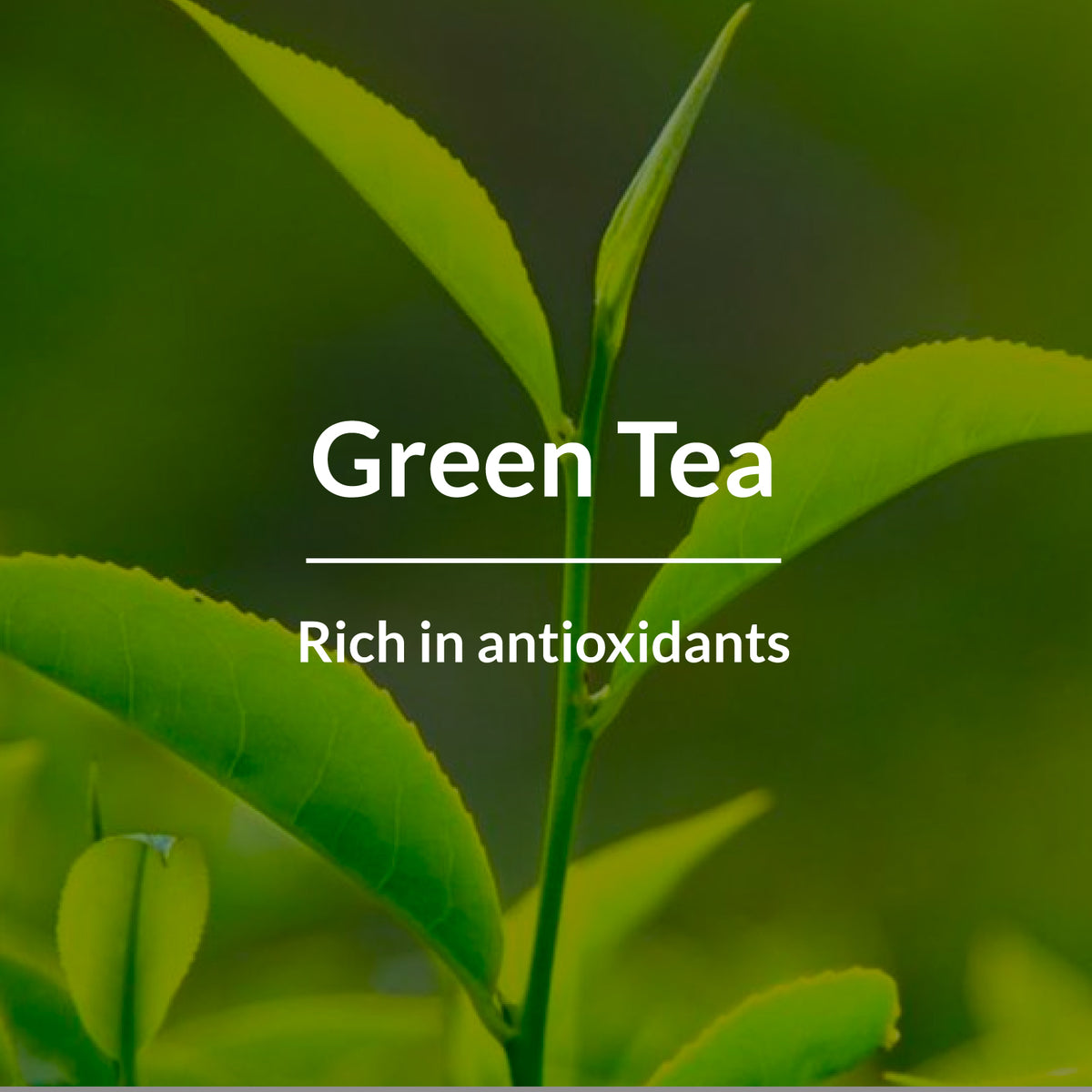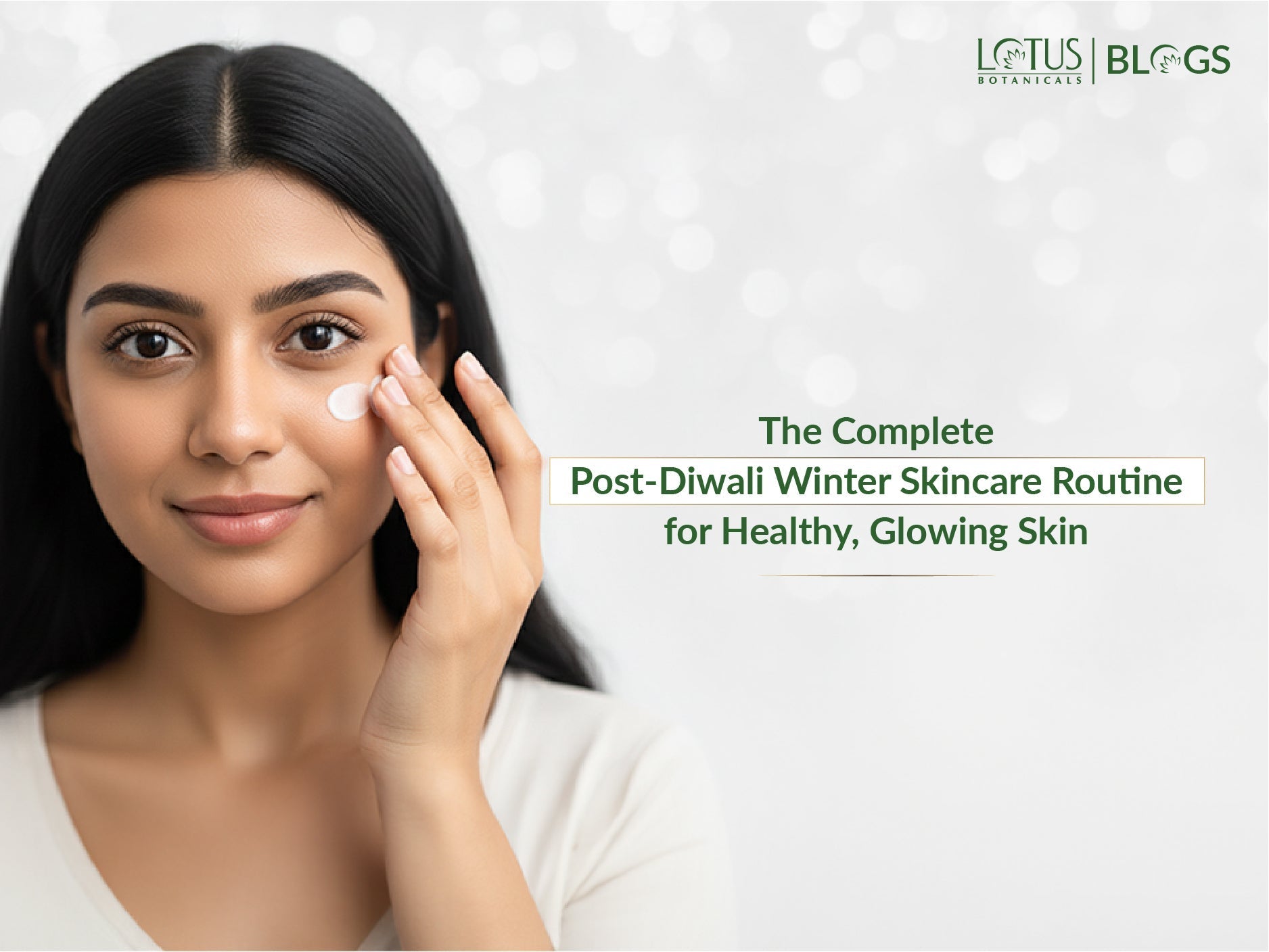
Highlights
-
Other Skin Problems
-
Final Words
Natural Remedies for Common Skin Concerns: DIY Solutions
Your skin is like a protective shield for your body, keeping the good stuff in and the bad stuff out. It's the largest organ you have, and it's important to take good care of it. Sometimes, though, our skin can have problems, like acne, dryness, oiliness, dark circles, or even sunburn.
But here's the good news: you don't always need fancy creams or expensive treatments to fix these issues. Nature has given us some amazing solutions right in our kitchens! These are called "natural remedies," and they can help your skin feel better and look healthier.
Vitamin C Skin Brightening Face Wash
Relieves Dark Circles | Hydrates | Repairs Sun Damage
Natural Baking Soda Anti-Acne Face Wash
Deeply Cleanses | Removes dirt & oil | Prevents acne breakouts

In this guide, we will explore these natural remedies for common skin concerns in a way that's easy to understand. Whether you have pesky pimples, dry patches, or puffy eyes, we've got DIY solutions that you can try at home. Plus, we'll share some important tips to keep your skin glowing and healthy. Remember, your skin deserves some love, and we're here to help you give it just that.
Different Skin Types
You may have heard about skin types before, but it's worth revisiting this topic because it forms the foundation for addressing common skin concerns effectively. Just like people come in all shapes and sizes, our skin varies too. Some have oily skin, some dry, some a bit of both, and others have sensitive skin that needs special care.
Understanding your skin type is like knowing your skin's personality. It helps you choose the right remedies and products to keep it happy and healthy.
There are four primary skin types, and here's a brief overview of each:
- Oily Skin: Oily skin tends to produce more oil than needed, making it appear shiny and prone to acne and blackheads.
- Dry Skin: Dry skin lacks moisture and can feel tight or rough. It may develop flakiness and can be sensitive to harsh products.
- Combination Skin: Combination skin is a mix of oily and dry areas. Typically, the T-zone (forehead, nose, and chin) is oily, while the cheeks may be dry.
- Sensitive Skin: Sensitive skin is easily irritated and can become red, itchy, or inflamed when exposed to certain products or environmental factors.
- Normal Skin: Normal skin is well-balanced. It's neither too oily nor too dry and generally doesn't have many skin issues.
GlycoBoost Radiant Skin Serum Crème
Glass Like Luminous Skin | Unique Serum Crème Formula
GlycoBoost Radiant Skin Super Serum
Boosts Skin Luminosity | Fades Dark Spots | Clear Blemishes
DIY Solutions for Common Skin Concerns
Did you know that millions of people around the world face skin problems every day? Acne, dryness, oiliness, dark circles, and sunburn affect countless individuals. But the good news is that you're not alone, and there are simple DIY solutions that can help.
Let's explore some practical remedies for these common skin concerns, using ingredients you might already have in your home.
With a little bit of natural care, you can join the ranks of those who have successfully tackled these issues, achieving healthier and happier skin. Here are some DIY solutions for common skin concerns:
1. For Acne
Acne is a common skin condition that occurs when hair follicles become clogged with oil and dead skin cells, leading to the formation of pimples, blackheads, whiteheads, and sometimes cysts. Acne can occur on the face, neck, chest, back, and shoulders.
While there are various over-the-counter and prescription treatments available for acne, here are two DIY solutions for acne:
A. Tea Tree Oil
Tea tree oil is an essential oil derived from the leaves of the tea tree (Melaleuca alternifolia), which is native to Australia. It has natural antibacterial and anti-inflammatory properties.
How to use it:
To use tea tree oil effectively, dilute a few drops in a carrier oil like jojoba or coconut oil (1:1 or 1:2 ratio). Apply this mixture to individual acne spots with a cotton swab. Perform a patch test first to check for sensitivity.
For a convenient option you can try serum containing tea tree oil. Consider trying "Salicylic Acid + Tea Tree Acne Control & Pore Cleansing Power Serum" by LotusBotanicals, which combines tea tree oil's benefits with salicylic acid for acne control and pore cleansing.
B. Honey and Cinnamon Mask
Honey and cinnamon are both known for their antibacterial and anti-inflammatory properties, making them potentially beneficial for acne-prone skin.
How to use it:
To use a honey and cinnamon mask, mix equal parts honey and cinnamon powder to create a paste. Apply the paste to your face, focusing on acne-prone areas.
Leave it on for 10-15 minutes to allow its antibacterial and anti-inflammatory properties to work. Rinse thoroughly with warm water and pat your face dry with a clean towel.
This DIY mask can help soothe and treat acne, but remember to do a patch test first to check for any adverse reactions.
2. For Dry Skin
Dry skin is also known as xerosis or xeroderma. It is a common skin condition characterized by a lack of moisture and oil on the skin's surface. It occurs when the skin's natural protective barrier, which consists of lipids (fats) and moisture, becomes compromised.
As a result, the skin loses its ability to retain water and becomes dehydrated. Dry skin can affect people of all ages and can be temporary or a chronic condition.
As for the treatment, consider using olive oil and coconut oil, and Oatmeal Bath as a DIY solution for dry skin. Here's an explanation:
A: Olive Oil or Coconut Oil Application
Olive Oil and Coconut Oil are natural oils that can help moisturize and hydrate dry skin. They are rich in fatty acids and have emollient properties, which means they can lock in moisture and create a protective barrier on the skin.
How to use it:
To use olive oil or coconut oil for dry skin, cleanse your face, leaving it slightly damp. To cleanse your face, you can try Lotusbotanicals’ “Vitamin C Skin Brightening Face Wash”.
*Vitamin C helps dry skin by promoting collagen production, aiding skin hydration, and reducing inflammation, resulting in improved skin moisture and overall texture.*
Once you cleanse your face, apply a few drops of the chosen oil, gently massaging it into your skin with upward, circular motions.
Allow the oil to absorb for a few minutes before applying other skincare or makeup. Repeat once or twice daily, preferably before bedtime, for deep hydration and a protective barrier against dryness.
B: Oatmeal Bath
An oatmeal bath is a soothing and natural remedy for dry, itchy skin. Oatmeal contains compounds that can help reduce inflammation and moisturize the skin.
How to use it:
You have to first prepare an oatmeal bath. To prepare an oatmeal bath, grind plain oats into a fine powder. Add 1/2 to 1 cup of the oatmeal powder to a warm bath and stir until dissolved.
To use, soak in the oatmeal-infused water for 15-20 minutes. Pat your skin dry gently after the bath, avoiding harsh rubbing. Oatmeal baths are soothing and can alleviate dry, itchy skin due to their anti-inflammatory and moisturizing properties.
You can take an oatmeal bath as needed, especially when experiencing skin dryness or irritation. If severe skin issues persist, consult a dermatologist for professional guidance.
3. For Oily Skin
Oily skin is a skin type characterized by an overproduction of sebum, a natural oil produced by the sebaceous glands in the skin.
Sebum is essential for keeping the skin moisturized and protecting it from external factors. However, when the sebaceous glands produce an excessive amount of sebum, it can lead to oily skin, which comes with a set of specific characteristics and challenges such as shiny appearance, enlarged pores, acne prone, etc.
Here are the two DIY solutions mentioned for oily skin:
A: Egg Whites
Egg whites can help tighten and temporarily shrink the appearance of pores. They also contain proteins that can contribute to healthier skin.
How to Use:
To use egg whites for oily skin, separate the egg white from the yolk. Apply the egg white to your clean face, avoiding the eye area. Let it dry for about 15-20 minutes. Rinse your face thoroughly with lukewarm water, then pat it dry with a clean towel.
Egg whites can temporarily tighten pores and reduce excess oil on the skin's surface. Incorporate this DIY mask into your skincare routine as needed to manage oily skin.
B: Baking Soda
Baking soda is a versatile ingredient in skincare. It's fine texture makes it an effective natural exfoliant, removing dead skin cells and unclogging pores. It can help reduce acne and blackheads, soothe itching and irritation, and balance skin's pH.
How to Use:
Baking soda can be used as an exfoliant and pH balancer for the skin. To use, mix a small amount of baking soda with water to create a paste. Gently apply this paste to damp skin in circular motions, avoiding the eye area. Rinse thoroughly with lukewarm water and pat dry.
Baking soda can also be used to create a DIY scrub by mixing it with water and applying it gently to the skin for exfoliation.
Alternatively, you can try a ready-made baking soda face scrub like Lotusbotanicals’ “Natural Baking Soda Deep Cleansing Face Wash" for a convenient and effective skincare option.
Remember to use scrubs sparingly to avoid over-exfoliating, especially if you have sensitive skin.
4. For Dark Circles
Dark circles are areas of discolored skin beneath your eyes. They often appear as bluish or purplish shadows and can make you look tired or older.
Dark circles can happen due to various reasons, like lack of sleep, genetics, or thin skin. They're usually harmless but can be bothersome. Therefore you need to incorporate DIY remedies to cure the problem. Here are two most effective DIY solutions for dark circles:
A: Cucumber Slices
Cucumber slices help dark circles due to their natural anti-inflammatory and hydrating properties. When placed over closed eyelids, they reduce puffiness, soothe the delicate skin, and temporarily constrict blood vessels, diminishing the appearance of dark circles and providing a refreshed look.
How to Use:
To use cucumber slices for reducing dark circles, follow these steps: Chill fresh cucumber slices, then place them on closed eyelids. Rest for 10-15 minutes.
The coolness of cucumbers helps reduce puffiness and soothes the skin. Cucumbers also contain antioxidants that may temporarily improve the appearance of dark circles.
This DIY remedy is a quick and natural way to refresh the under-eye area, providing a short-term solution for tired-looking eyes.
B: Cold Tea Bags
Cold tea bags help reduce the appearance of dark circles by constricting blood vessels and reducing puffiness. The cool temperature and caffeine content in tea work together to shrink blood vessels under the eyes, making dark circles less noticeable. This temporary improvement in circulation and reduced swelling can make the skin around the eyes look brighter and less shadowed.
How to Use:
To use cold tea bags for dark circles, brew two caffeinated tea bags (like green or black tea), let them cool in the fridge, then place one on each closed eyelid. Lie down for 10-15 minutes as the cold tea bags work their magic.
The caffeine in the tea can help constrict blood vessels, temporarily reducing puffiness and the appearance of dark circles. Afterward, discard the tea bags and gently rinse your face with cool water.
This quick DIY remedy is a simple and natural way to refresh tired eyes and reduce the appearance of dark circles.
5. For Sunburn
Sunburn is a painful skin condition caused by overexposure to the sun's ultraviolet (UV) rays. It results in red, swollen, and often blistered skin, accompanied by discomfort, heat, and peeling.
Sunburn occurs due to the skin's inability to defend against excessive UV radiation, leading to damage and inflammation. It can range from mild to severe, with severe cases potentially increasing the risk of skin cancer.
Here's how to address sunburn with DIY methods:
A: Aloe Vera
Aloe vera is a natural, soothing remedy for sunburn. It has anti-inflammatory properties that can help reduce redness and provide relief from the burning sensation.
How to Use:
To use aloe vera, obtain a fresh aloe vera leaf or use store-bought aloe vera gel (make sure it's 100% pure). If you're using a leaf, cut it open and extract the gel.
Apply the aloe vera gel directly to the sunburned areas of your skin. You can also keep the gel in the refrigerator for a cooling effect.
Reapply the aloe vera gel as needed throughout the day to keep your skin moisturized and alleviate discomfort.
For convenience, you can opt for LotusBotanicals' "Sandalwood & Hyaluronic Acid Glow and Hydrating Sunscreen Serum | SPF50+ | PA+++" as an alternative to fresh aloe vera for sunburn relief and sun protection. This product offers SPF50+ and PA+++ protection, helping prevent sunburn and skin damage.
B: Cool Compress
A cool compress is a cloth or towel soaked in cold water and applied to the skin. It helps sunburn by reducing skin temperature, soothing inflammation, and relieving the burning sensation. The coldness constricts blood vessels, reducing redness and swelling, while providing immediate relief.
How to Use:
To use a cool compress for sunburn, soak a clean cloth in cold water, wring it out, and gently place it on the sunburned area. Leave it on for 15-20 minutes, or until it warms up. Repeat as needed throughout the day to alleviate heat and discomfort.
This helps soothe the skin, reduce redness, and relieve the burning sensation caused by sunburn. Avoid using very cold water, as it can be too harsh on sunburned skin.
6. Blackheads
Blackheads are small, dark-colored, and often slightly raised bumps on the skin. They form when hair follicles become clogged with a mixture of dead skin cells, oil (sebum), and sometimes bacteria.
The dark color is due to the oxidation of the trapped debris, not dirt. Blackheads typically appear on the face, especially in the nose, chin, and forehead areas.
They are a type of acne lesion and are considered non-inflammatory, meaning they don't usually cause redness or pain, but they can be cosmetically bothersome. They may be bothersome but they look clumsy on the face. Here are the two DIY solutions you can opt:
A: Honey and Cinnamon Strips
Honey and cinnamon strips can help treat blackheads by combining the antibacterial properties of honey with the exfoliating qualities of cinnamon. When applied, this mixture can help unclog pores, reduce inflammation, and remove blackheads. Over time, regular use can lead to clearer and smoother skin.
How to Use:
To make Honey and Cinnamon Strips for blackheads, mix 1 tbsp honey with 1 tsp cinnamon to form a paste. Apply it to blackhead-prone areas, then place a cotton strip over the paste. Leave for 10-15 minutes until dry, then gently peel it off in the opposite direction of hair growth.
Finally, Rinse and moisturize. Looking for a moisturizer? Consider using this amazing “Vitamin C Skin Brightening Face Moisturiser.” This moisturizer can enhance the effects of Honey and Cinnamon Strips. Vitamin C helps fade dark spots and boosts overall skin radiance, complementing the blackhead removal and skin texture improvement achieved with the strips.
You can use this combination strips weekly to help remove blackheads and improve skin texture.
B: Oatmeal and Yogurt Mask
An Oatmeal and Yogurt Mask is effective against blackheads due to its natural exfoliating and cleansing properties. Oatmeal gently removes dead skin cells and excess oil while yogurt's lactic acid helps unclog pores. Together, they promote skin renewal, reduce blackheads, and leave the skin smoother and clearer when used regularly.
How to Use:
To use, first create an Oatmeal and Yogurt Mask for blackheads. Combine 1 tablespoon of oatmeal with 1 tablespoon of plain yogurt and a few drops of lemon juice.
Apply the mixture to your face, gently massage for a few minutes, and let it sit for 10-15 minutes. Rinse off with lukewarm water and follow with a moisturizer.
This mask helps exfoliate and reduce blackheads due to the natural exfoliating properties of oatmeal and the lactic acid in yogurt. Use it once or twice a week for best results as part of your skincare routine.
Vitamin C Skin Brightening Face Moisturiser
Boosts Skin Moisturisation | Soft and Supple Skin | Reduces Pigmentation
Natural Green Tea HydraDetox Moisture-Replenishing Face Serum
Fades Blemishes | Brightens Skin | Tightens Pores
Other Skin Problems
There are other various skin problems that don't help with DIY remedies.
For example, Wrinkles are a common sign of aging, appearing as fine lines and creases on the skin over time. They are a natural part of getting older.
On the other hand, puffy eyes, uneven skin tone, and eczema are not always age-related.
- Puffy eyes can be due to factors like lack of sleep or allergies.
- Uneven skin tone can result from various causes, such as sun exposure or hormonal changes.
- Eczema is a skin condition characterized by red, itchy patches and can affect people of all ages.
You cannot cure these skin issues with DIY remedies. If you have concerns about the above skin problems, it's important to consult a healthcare professional for a proper diagnosis and treatment plan.
Final Words
Taking care of your skin doesn't always require fancy products or expensive treatments. DIY solutions for common skin concerns can be simple and effective. For acne, try a honey and cinnamon mask to reduce inflammation. For dry skin, use olive oil as a natural moisturizer. Exfoliate with a sugar scrub for smoother skin. Sunburn? Apply cool aloe vera gel. Dark circles under your eyes? Cucumber slices work
wonders. Lastly, stay hydrated and protect your skin from the sun. These easy DIY remedies can help you achieve healthy, glowing skin without breaking the bank. Remember, simple steps can lead to big improvements in your skin's health.
Highlights
-
Other Skin Problems
-
Final Words
Related Products
Vitamin C Skin Brightening Day Crème
Brightens Skin | Unique Gel Crème Formula | 100x Vitamin C
Bio-Retinol Youth Radiance Ultra Crème
Helps Reduce Fine Lines & Wrinkles | Promotes Younger Looking Skin
Ubtan De-Tan Radiance Face Wash - 100ml
Gold Like Glow | Reduces Tan & Sunburns | Revives Dull Skin
Vitamin C Skin Brightening MatteFLUID Sunscreen | SPF 50 | PA+++
Unique MatteFLUID Texture | 100x Vitamin C | Dermatologically Tested
Vitamin C Skin Brightening Face Serum
Deeply Hydrates Skin | 100x Vitamin C | Reduces Pigmentation
Raspberry & Hyaluronic Acid Ultra Glow Hydration Boosting Face Serum
Deeply Mositurises Skin | Rich in Antioxidants | Promotes even skin Tone | Brightens Skin







